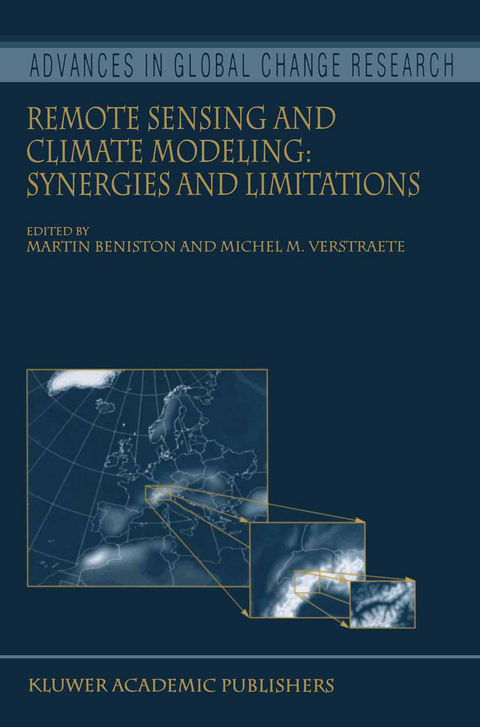
Remote Sensing and Climate Modeling: Synergies and Limitations
Springer (Verlag)
978-90-481-5648-1 (ISBN)
A global vegetation index for SeaWiFS: Design and applications.- Modeling sensible heat flux using estimates of soil and vegetation temperatures: the HEIFE and IMGRASS experiments.- Exploitation of Surface Albedo Derived From the Meteosat Data to Characterize Land Surface Changes.- Towards a Climatology of Australian Land Surface Albedo for use in Climate Models.- Collocated surface and satellite observations as constraints for Earth radiation budget simulations with global climate models.- How well do aerosol retrievals from satellites and representation in global circulation models match ground-based AERONET aerosol statistics?.- Remote Sensing of Snow and Characterization of Snow Albedo for Climate Simulations.- Using the Special Sensor Microwave Imager to Monitor Surface Wetness and Temperature.- Snow Cover Fraction In A General Circulation Model.- Boreal Forest Fire Regimes And Climate Change.- Specification of surface characteristics for use in a high resolution regional climate model: on the role of glaciers in the swiss alps.- Using Satellite Data Assimilation to Infer Global Soil Moisture Status and Vegetation Feedback to Climate.- The Use of Remotely-Sensed Data for the Estimation of Energy Balance Components in a Mountainous Catchment Area.- Integration of operationally available remote sensing and synoptic data for surface energy balance modelling and environmental applications on the regional scale.
| Reihe/Serie | Advances in Global Change Research ; 7 |
|---|---|
| Zusatzinfo | X, 346 p. |
| Verlagsort | Dordrecht |
| Sprache | englisch |
| Maße | 155 x 235 mm |
| Themenwelt | Schulbuch / Wörterbuch |
| Naturwissenschaften ► Biologie ► Ökologie / Naturschutz | |
| Naturwissenschaften ► Geowissenschaften ► Geografie / Kartografie | |
| Naturwissenschaften ► Geowissenschaften ► Geologie | |
| Naturwissenschaften ► Geowissenschaften ► Meteorologie / Klimatologie | |
| Sozialwissenschaften | |
| ISBN-10 | 90-481-5648-3 / 9048156483 |
| ISBN-13 | 978-90-481-5648-1 / 9789048156481 |
| Zustand | Neuware |
| Haben Sie eine Frage zum Produkt? |
aus dem Bereich


